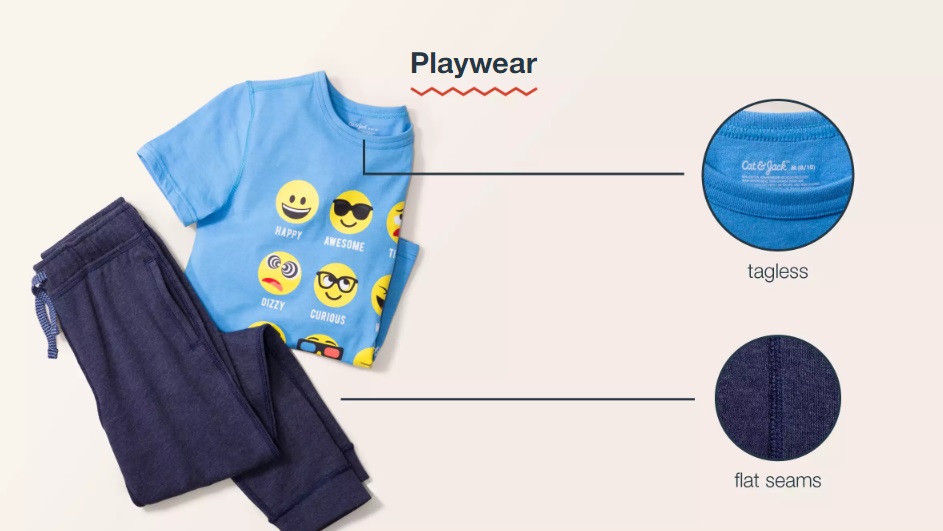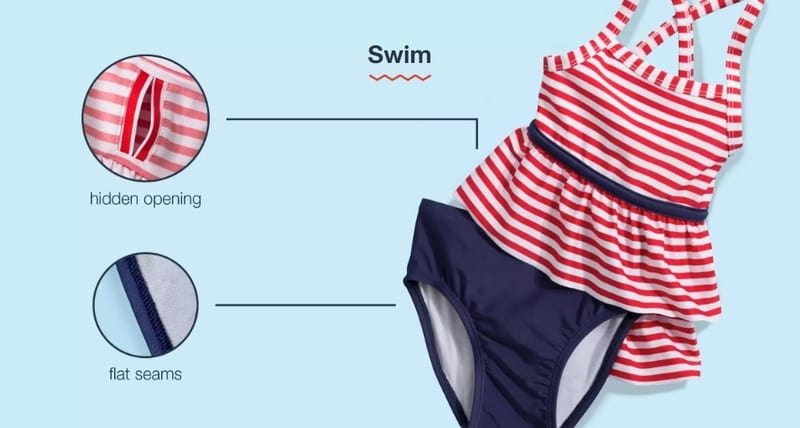The first Target store opened in 1962 in Minneapolis and, in spite of rapid expansion, this retailer has maintained its objective to provide convenient, one-stop shopping with competitive or discounted price points. The chain has grown to include 1,829 stores in the U.S., ranking the brand among the top sellers nationwide. As part of their ‘corporate responsibility,’ the company has integrated diversity and inclusion into its culture to better serve both employees and customers.
Target has a wide range of merchandise ─ housewares, toys, groceries, etc. ─ but many patrons especially love to shop the big-box store’s on-trend appeal, which has boasted collaborations with Alexander McQueen, Isaac Mizrahi, Lilly Pulitzer and other well-known designers. Target’s marquee clothing brand for kids, Cat & Jack, has sought collaborative input directly from consumers (even youngsters)! Designer Stacey Monsen and her Target colleagues learned that uncomfortable tags, seams and appeal detail make dressing troublesome for those with sensory-processing sensitivities. Even before receiving such customer feedback, Monsen knew of this from personal experience. She shared in an internal interview last year that her 7-year-old daughter, Elinor, who has autism, was not potty-trained and, thus, she typically purchased functional, not fashionable, garments in a size up. In August 2017, Monsen spearheaded a limited sensory-friendly collection (available online from $4.50 to $7 per item).
“We first introduced sensory-friendly pieces within Cat & Jack that included three styles for girls (long-sleeve tee, short-sleeve tee and leggings) and two styles for boys (long-sleeve and short-sleeve tee). Since then, we have expanded to graphic tees, joggers, bodysuits, denim, jumpsuits, shorts, dresses, sweatshirts, swim, tanks and more,” says Target’s Corporate Public Relations Lead Danielle Schumann. “The fabric used in the sensory-friendly pieces is the same extra-soft, comfortable, durable cotton knits used throughout much of the Cat & Jack collection,” she says, but with adapted features to minimize discomfort by using heat-transferred labels in place of tags, flat seams and one-dimensional graphic tees that don’t interfere with a child’s skin.
In October 2017, Target expanded the line with additional adaptive apparel items featuring side and back snaps, zip closures, hidden openings for abdominal access and more. The 40-item assortment included outerwear with zip-off sleeves, footless sleepwear, diaper-friendly leggings and bodysuits and more. These garments are available at Target.com in sizes 2T-5T (Toddler) and XS-XXL (Big Kids) for $4.50 to $39.99. Target has also extended adaptive selections to women’s (Universal Thread and A New Day brands) and men’s (Goodfellow &Co), and is considering in-store availability.
In 2012, Target made in-store shopping more accessible by offering Caroline’s Cart, a buggy designed to help parents and/or caregivers shop with older children or adults who have special needs without having to simultaneously maneuver both a cart and wheelchair. When Drew Ann and David Long’s daughter, Caroline, who has Rett syndrome (a rare genetic condition that affects brain function), outgrow the standard shopping cart, they partnered with cart manufacturer Technibilt to empower retailers to better serve customers. Caroline’s Cart has a built-in seat that accommodates a person up to 250 pounds and faces the caregiver steering the cart. Aside from Target, Caroline’s Cart is available (at select locations) at Albertson’s, Best Buy, Kroger, Lowes, Publix, Sam’sClub and Wal-Mart, to name a few.
It was Target’s advertising efforts, however, that first clued consumers into the company’s dedication toward diversity and inclusion. In 2012, then 6-year-old Ryan Langston, who has Down syndrome, appeared in the brand’s advertisements and weekly flyers. At the time, Target was among the most of prominent retailers to feature a model with special needs; though, the company did not call attention to this inclusion or attempt to solicit self-serving press. Schumann explains, “We’ve included people with disabilities in our advertising for more than 25 years. We purposefully cast the models in our marketing to reflect the diversity that we see in our world everyday.” According to Schumann, Target’s “purpose is to help all families discover the joy of everyday life. This purpose and our core beliefs of diversity and inclusivity are reflected in our advertising and in our business overall. We believe diversity and inclusivity make teams and Target better!” As if shoppers needed yet another reason to love this store and go shopping…








